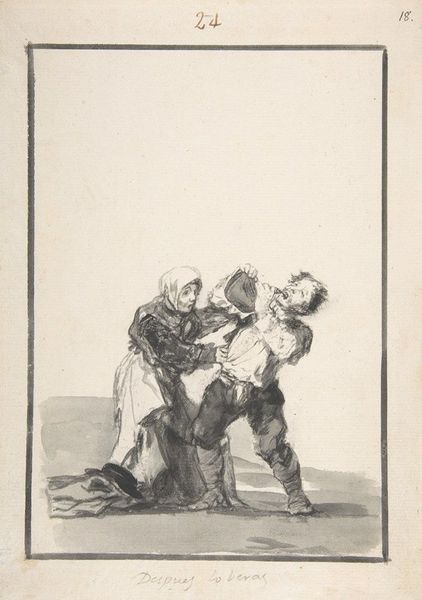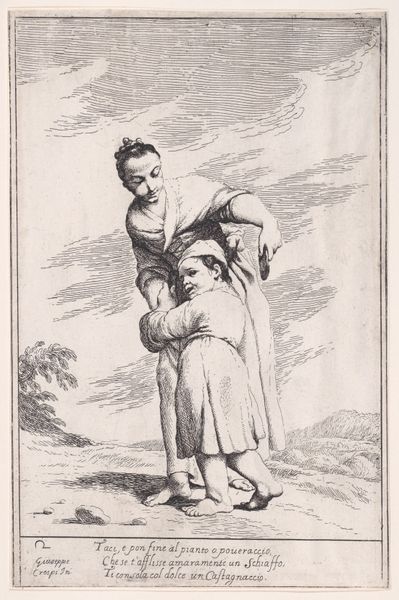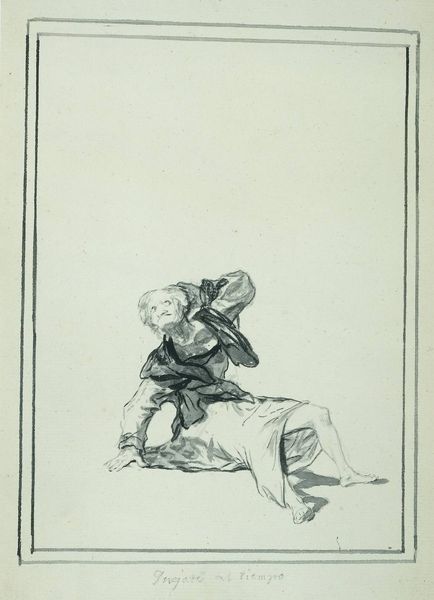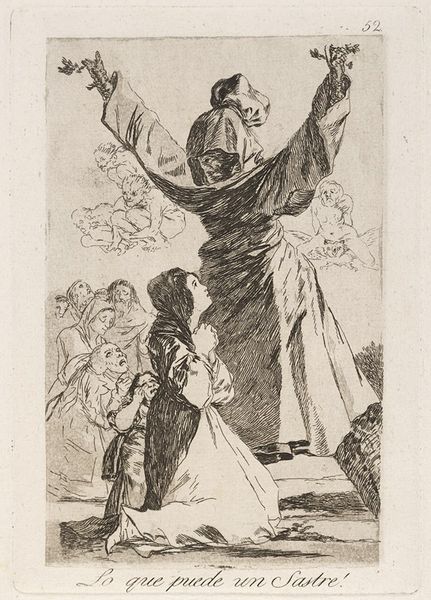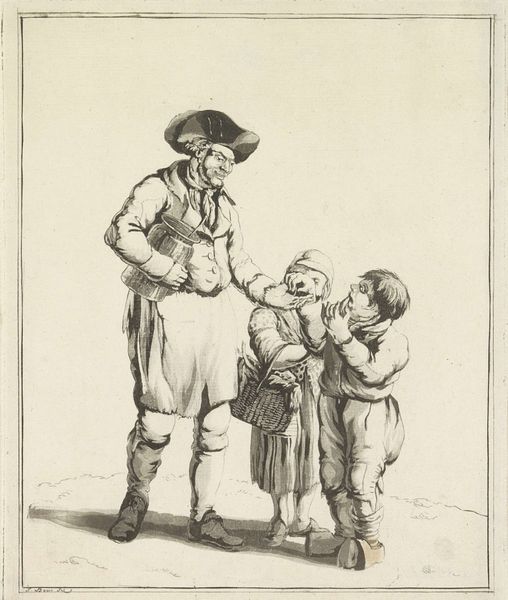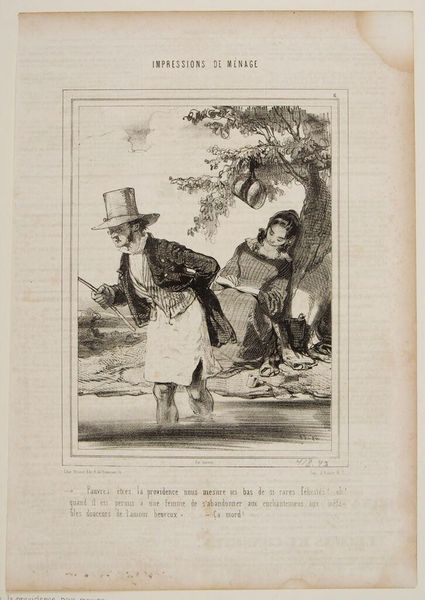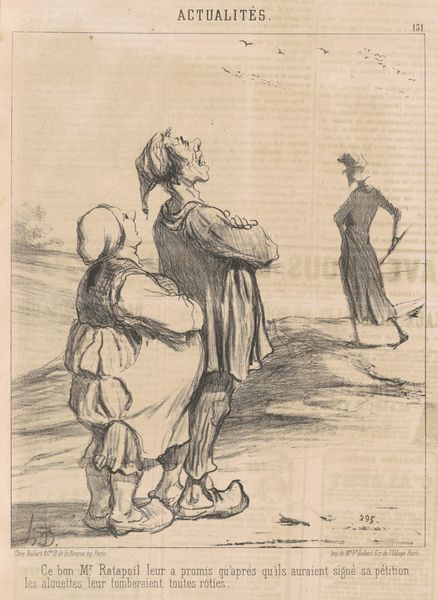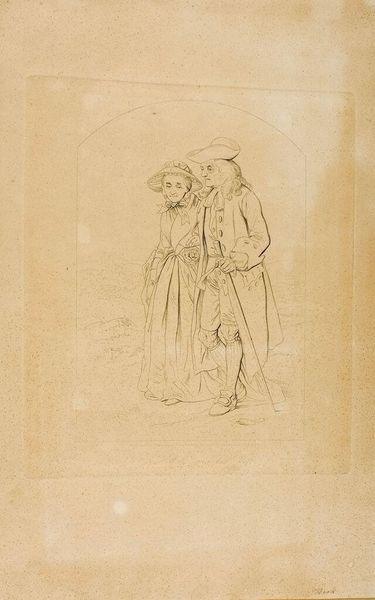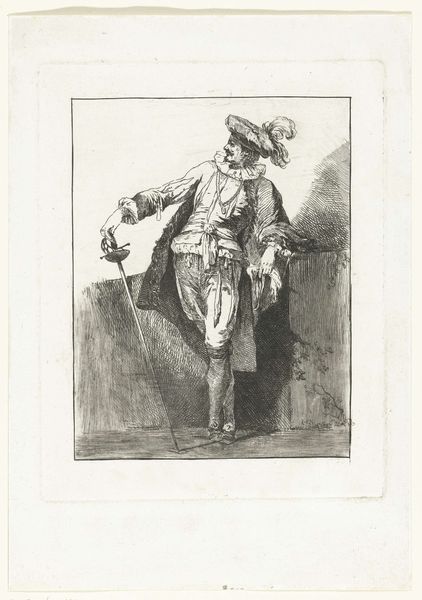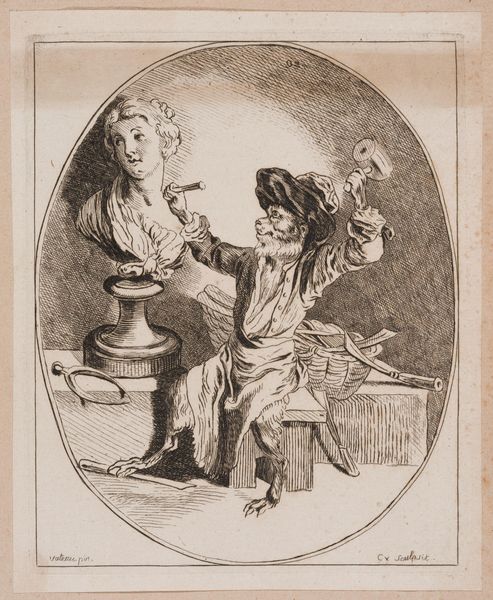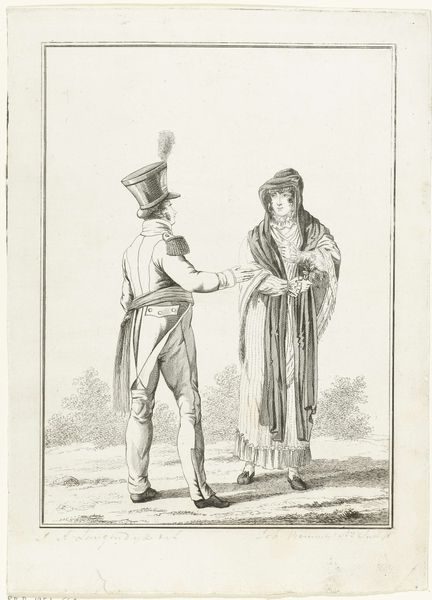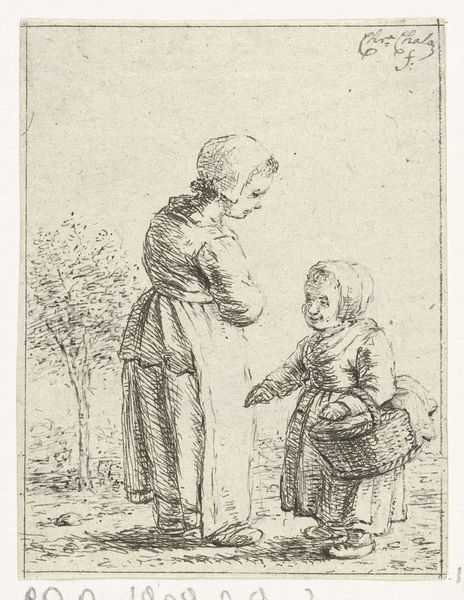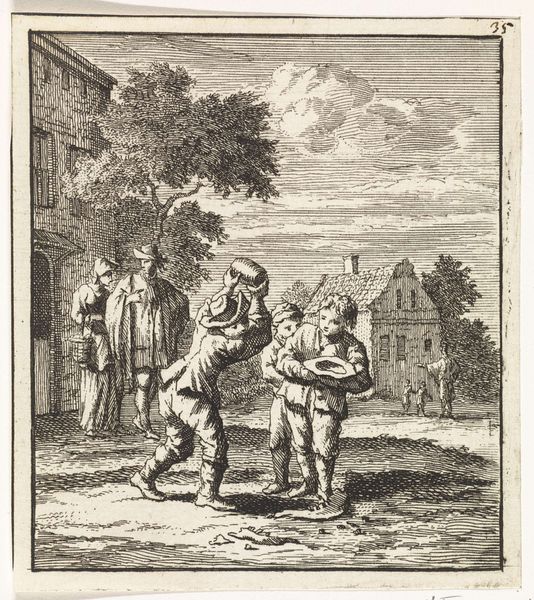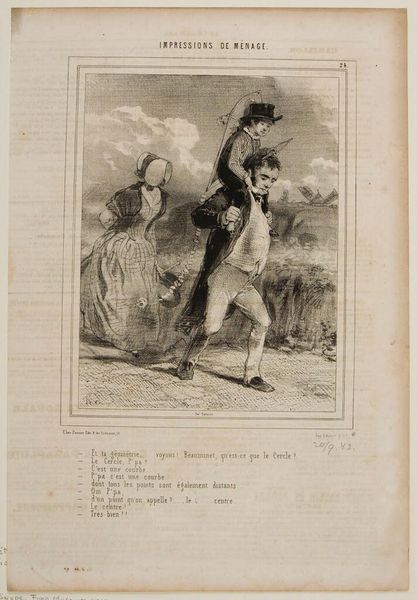
drawing, ink
#
drawing
#
narrative-art
#
caricature
#
figuration
#
ink
#
romanticism
Copyright: Public Domain: Artvee
Editor: This ink drawing, "Contemptuous of the Insults," was created by Francisco de Goya between 1816 and 1820. It depicts a taller figure facing three smaller figures, maybe children, with exaggerated features. I’m struck by the seeming power dynamic, a sense of mockery perhaps? What's your interpretation of the social commentary here? Curator: Goya, as an activist, consistently questioned societal structures through his art. Notice how the figures are rendered; the supposed adult possesses a dismissive, almost smug expression. Considering the political turmoil of Spain at the time, specifically the restoration of the monarchy, might Goya be using these caricatures to represent the old guard’s attitude towards a struggling populace? Editor: So, the “insults” could be symbolic of oppression, and the older figure embodies a power structure? But why the exaggerated features, the almost grotesque appearance of the children, or figures? Curator: Precisely. The exaggeration serves as a form of visual critique. Think about Romanticism and its preoccupation with the grotesque as a way to challenge accepted beauty standards and societal norms. Goya utilizes this to depict not just physical ugliness but a moral deficiency. Could we then infer that Goya sees these figures representing ignorance and cruelty, empowered by a failing system? Editor: That’s a fascinating reading. I hadn’t considered the use of Romanticism in this light – as a direct form of social protest. I’m used to it in connection to a lot of nature images. Curator: Exactly! How else could this understanding apply when discussing political movements that are active today? How do contemporary artists use those same methods of visual critique, such as caricature, or challenging beauty standards, as commentary? Editor: That's something I hadn’t considered before, thank you. It really shows how Goya’s activism resonates through his art. Curator: It also demonstrates how art historical analysis provides tools to understand our world now.
Comments
No comments
Be the first to comment and join the conversation on the ultimate creative platform.
